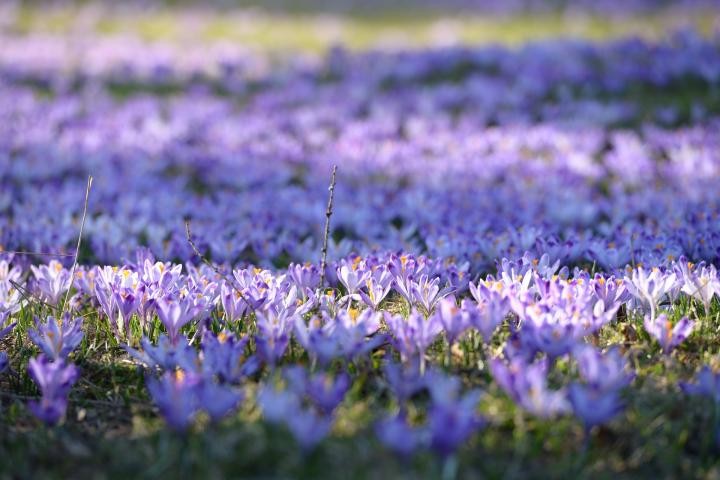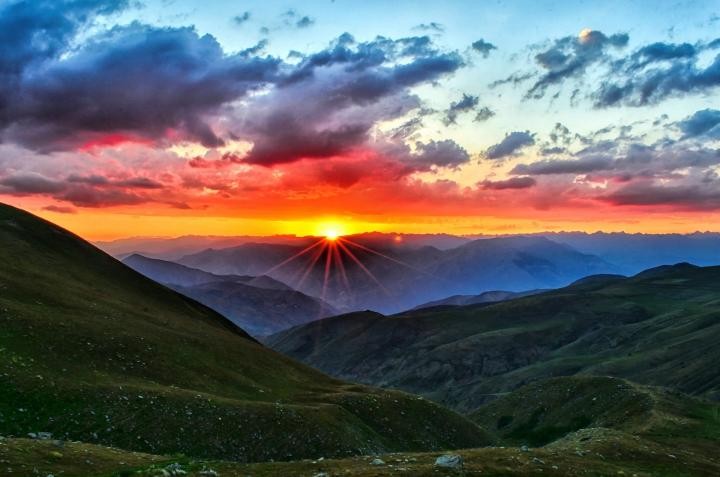What Is The First Day Of Spring 2024? This is a question many are asking as they eagerly anticipate warmer weather and blooming flowers. WHAT.EDU.VN provides a comprehensive guide to understanding the vernal equinox and what it signifies, offering clarity and ease of understanding. Discover the astronomical and meteorological perspectives of the spring season and explore fascinating facts about the equinox, including equal day and night, spring equinox traditions, vernal equinox oddities, and ancient seasonal markers.
1. Understanding the Spring Equinox: A Comprehensive Guide
The spring equinox, often called the vernal equinox or March equinox, marks the astronomical beginning of spring in the Northern Hemisphere and autumn in the Southern Hemisphere. It is a time when the sun crosses the celestial equator, moving from south to north. This event brings about near-equal amounts of sunlight to both hemispheres. Let’s delve into what makes this day significant and how it’s determined.
1.1. Astronomical vs. Meteorological Spring
Understanding the difference between astronomical and meteorological spring is crucial.
- Astronomical Spring: Defined by the position of Earth in relation to the sun, starting with the vernal equinox (March 19, 20, or 21).
- Meteorological Spring: Defined by weather scientists to align with annual temperature cycles, always starting on March 1.
Both perspectives are accurate, serving different purposes. The meteorological definition simplifies seasonal comparisons, while the astronomical definition emphasizes Earth’s orbital dynamics.
1.2. Date and Time of the Spring Equinox in 2024
In 2024, the spring equinox occurred on March 19th. This precise moment is when the sun crosses the celestial equator. The exact time varies each year due to the Earth’s elliptical orbit and the complexities of the Gregorian calendar.
1.3. Why Does the Date of the Equinox Shift?
The equinox date shifts because the Earth’s orbit around the sun isn’t perfectly aligned with our calendar system. The Earth takes approximately 365.25 days to orbit the sun, and the extra quarter day each year accumulates, causing the equinox date to fluctuate. Leap years help correct this discrepancy, but the date still varies slightly.
2. The Science Behind the Equinox: How It Works
The equinox is a fascinating astronomical event. Understanding the science behind it can deepen our appreciation for the changing seasons.
2.1. Celestial Equator Explained
The celestial equator is an imaginary line in the sky directly above Earth’s equator. Imagine standing on Earth’s equator; the sun would pass directly overhead on the equinox, heading north. This is because the Earth’s tilt is zero relative to the Sun at this moment.
2.2. Equal Sunlight for Both Hemispheres
On the vernal equinox, both the Northern and Southern Hemispheres receive nearly equal amounts of sunlight. This occurs because neither hemisphere is tilted more towards or away from the sun. The sun’s rays strike the Earth most directly at the equator.
2.3. Sunrise and Sunset on the Equinox
Equinoxes are unique because the sun rises due east and sets due west for everyone on Earth, with exceptions at the North Pole and the equator. This phenomenon happens because Earth’s axis is neither pointing toward nor away from the sun during its overhead passage.
3. Equinox vs. Solstice: Understanding the Difference
The terms “equinox” and “solstice” are often used interchangeably, but they represent different astronomical events. It’s important to understand their unique characteristics.
3.1. Defining Solstice
A solstice occurs when the sun reaches its highest or lowest point in the sky relative to Earth. There are two solstices each year:
- Summer Solstice: Marks the longest day of the year and the beginning of summer.
- Winter Solstice: Marks the shortest day of the year and the beginning of winter.
3.2. Key Differences Summarized
| Feature | Equinox | Solstice |
|---|---|---|
| Occurrence | Twice a year (spring and autumn) | Twice a year (summer and winter) |
| Sunlight | Nearly equal day and night | Maximum or minimum daylight hours |
| Sun’s Position | Crosses the celestial equator | Reaches highest or lowest point in sky |
| Seasonal Marker | Start of spring and autumn | Start of summer and winter |




3.3. Why Both Events Matter
Both equinoxes and solstices are crucial markers of the changing seasons. They influence weather patterns, agricultural practices, and cultural celebrations around the world. Understanding these events helps us appreciate the Earth’s dynamic relationship with the sun.
4. Cultural Significance of the Spring Equinox
The spring equinox has been celebrated across cultures for centuries, often representing renewal, rebirth, and new beginnings. These celebrations reflect humanity’s deep connection to nature and the changing seasons.
4.1. Ancient Traditions and Rituals
Many ancient civilizations tracked the equinoxes and solstices, building monuments to mark these events.
- Chichen Itza (Mayan Civilization): The pyramid’s design casts a shadow resembling a snake slithering down the steps on the spring equinox.
- Stonehenge (Neolithic Era): Aligned with the solstices, but equinoxes also hold significance in its astronomical alignment.
4.2. Modern Celebrations and Festivals
Today, many cultures continue to celebrate the spring equinox with festivals and traditions. Easter and Passover are two prominent spring festivals celebrated around the world.
4.3. Equinox Folklore: Balancing Eggs
One popular folklore tradition is the belief that you can stand a raw egg on its end during the equinox. While this is possible, it’s not exclusive to the equinox; balancing an egg can be done on any day with enough patience and a slightly bumpy surface.
5. Fun Facts and Oddities About the Spring Equinox
There are several fascinating facts and unique observations related to the spring equinox that can deepen your appreciation for this seasonal transition.
5.1. Day and Night Are Not Exactly Equal
Despite the name “equinox,” day and night are not precisely equal. Daytime begins the moment the first part of the sun appears over the horizon and lasts until the last part disappears. This means that there is slightly more daylight than nighttime on the equinox.
5.2. Vernal Equinox Oddities: A Deeper Dive
- Varying Dates: The civil calendar date of the equinox shifts every year.
- Time Zone Differences: There hasn’t been a March 21 equinox in the mainland United States during the entire 21st century.
5.3. The Sun’s Unique Path
On the equinox, the sun rises due east and sets due west for everyone on Earth (except at the North Pole and the equator). This provides a unique opportunity to observe the sun’s path and appreciate the Earth’s alignment.
6. Springtime Activities: Embrace the Season
As the first day of spring approaches, there are numerous ways to celebrate and embrace the season. From outdoor adventures to creative projects, spring offers opportunities for everyone.
6.1. Outdoor Adventures and Nature Exploration
Spring is the perfect time to explore nature. Consider activities like:
- Hiking and Nature Walks: Enjoy the blooming flowers and fresh air.
- Gardening: Plant seeds and watch them grow.
- Picnics: Have a meal outdoors with friends and family.
- Bird Watching: Observe migrating birds returning for the season.
6.2. Creative Projects and DIY Ideas
Engage in creative projects that reflect the spirit of spring:
- Floral Arrangements: Create beautiful bouquets with seasonal flowers.
- Spring Cleaning: Declutter your home and welcome new energy.
- Painting and Drawing: Capture the colors and scenes of spring.
- DIY Decorations: Make festive decorations for your home or garden.
6.3. Cultural Celebrations and Festivities
Participate in cultural events and festivities that celebrate spring:
- Easter: Enjoy egg hunts, family gatherings, and religious observances.
- Passover: Partake in traditional meals and ceremonies.
- Local Festivals: Attend community events that celebrate the season.
7. Spring in Different Cultures: Global Perspectives
The arrival of spring is celebrated in diverse ways across the globe. Each culture brings its unique traditions and perspectives to this seasonal transition.
7.1. Unique Traditions Around the World
- Nowruz (Persian New Year): Celebrated on the spring equinox, it involves special foods, family gatherings, and symbolic rituals.
- Holi (India): A vibrant festival of colors that marks the arrival of spring and the triumph of good over evil.
- Songkran (Thailand): A water festival that symbolizes cleansing and renewal.
- Hanami (Japan): The cherry blossom festival, where people gather to appreciate the beauty of the blooming trees.
7.2. Symbolic Meanings and Customs
In many cultures, spring symbolizes rebirth, renewal, and the triumph of light over darkness. Customs often include:
- Planting Seeds: Represents new beginnings and growth.
- Spring Cleaning: Symbolizes the removal of negativity and old energy.
- Festivals and Parades: Celebrate the joy and abundance of the season.
7.3. How Different Regions Experience Spring
Different regions experience spring in unique ways, depending on their climate and geographical location.
- Temperate Zones: Characterized by blooming flowers, milder temperatures, and longer daylight hours.
- Tropical Regions: May experience the end of the dry season and the beginning of increased rainfall.
- Arctic Regions: Witness the melting of snow and ice, bringing new life to the landscape.
8. Addressing Common Misconceptions About Spring
Several misconceptions surround the concept of spring. Addressing these can provide a clearer understanding of the season and its characteristics.
8.1. Debunking Common Myths
- Myth: Spring always starts on March 21st.
- Fact: The astronomical start of spring can fall on March 19th, 20th, or 21st.
- Myth: Day and night are exactly equal on the equinox.
- Fact: There is slightly more daylight than nighttime on the equinox due to atmospheric refraction and how sunrise and sunset are defined.
- Myth: Balancing an egg is only possible on the equinox.
- Fact: Balancing an egg can be done any day with patience and a suitable surface.
8.2. Clarifying Astronomical vs. Meteorological Dates
Understanding the difference between astronomical and meteorological definitions of spring is crucial.
- Astronomical Spring: Based on the Earth’s position relative to the sun.
- Meteorological Spring: Based on annual temperature cycles for statistical purposes.
8.3. The Impact of Climate Change on Spring
Climate change is affecting the timing and characteristics of spring. Warmer temperatures can lead to earlier blooming of flowers and changes in migration patterns of animals. Understanding these impacts is essential for conservation efforts.
9. Astrological Significance of the Spring Equinox
In astrology, the spring equinox holds significant meaning. It marks the beginning of the zodiac year and is associated with new beginnings and fresh starts.
9.1. Aries Season Begins
The spring equinox coincides with the beginning of Aries season, the first sign in the zodiac. Aries is associated with:
- Initiative: A time to start new projects and take action.
- Energy: A surge of vitality and motivation.
- Courage: An opportunity to face challenges with confidence.
9.2. Astrological Interpretations
Astrologers often interpret the spring equinox as a time for:
- Renewal: Letting go of the past and embracing new opportunities.
- Balance: Finding harmony between different aspects of life.
- Growth: Nurturing personal and spiritual development.
9.3. How to Harness Spring’s Energy
To harness the energy of spring, consider:
- Setting Intentions: Define your goals and aspirations for the coming months.
- Taking Action: Start working towards your goals with enthusiasm.
- Embracing Change: Be open to new experiences and opportunities.
- Connecting with Nature: Spend time outdoors to recharge and find inspiration.
10. Springtime Verse, Quotes, and Sayings
Words often capture the essence of spring. Exploring verses, quotes, and sayings can enrich your appreciation of the season.
10.1. Verse
- “For glad Spring has begun, And to the ardent sun The earth, long time so bleak, Turns a frost-bitten cheek.” – Celia Thaxter
- “Spring-time sweet The whole Earth smiles, thy coming to greet.” – Unknown
- “Never yet was a springtime, Late though lingered the snow, That the sap stirred not at the whisper Of the southwind, sweet and low.” – Margaret Elizabeth Sangster
10.2. Quotes
- “Spring is nature’s way of saying, ‘Let’s party!'” – Robin Williams
- “You can cut all the flowers but you cannot keep spring from coming.” – Pablo Neruda
- “In the spring, I have counted 136 different kinds of weather inside of 24 hours.” – Mark Twain
10.3. Sayings
- “Bluebirds are a sign of spring; warm weather and gentle south breezes they bring.”
- “One swallow does not make a spring.”
- “In spring, no one thinks of the snow that fell last year.”
- “When the dandelions bloom early in spring, there will be a short season. When they bloom late, expect a dry summer.”
- “Don’t say that spring has come until you can put your foot on nine daisies.”
11. What is the First Day of Spring? Frequently Asked Questions
Navigating the nuances of the first day of spring can be confusing. Here are some frequently asked questions to clarify common points of uncertainty.
11.1. Q: Is the first day of spring always on March 20th?
A: No, the first day of spring, astronomically speaking, can fall on March 19th, 20th, or 21st. The exact date varies each year due to the Earth’s orbit and calendar system.
11.2. Q: What is the difference between astronomical and meteorological spring?
A: Astronomical spring is defined by the Earth’s position relative to the sun, starting with the vernal equinox. Meteorological spring is defined by weather scientists to align with annual temperature cycles, always starting on March 1st.
11.3. Q: Are day and night exactly equal on the spring equinox?
A: While the name suggests equal day and night, there is slightly more daylight than nighttime on the equinox. This is due to atmospheric refraction, which causes the sun to appear earlier and linger longer.
11.4. Q: Why does the date of the spring equinox shift each year?
A: The date shifts because the Earth’s orbit around the sun isn’t perfectly aligned with our calendar system. The extra quarter day each year accumulates, causing the equinox date to fluctuate. Leap years help correct this discrepancy.
11.5. Q: How do different cultures celebrate the spring equinox?
A: Cultures around the world celebrate the spring equinox in diverse ways, including festivals, rituals, and traditions. Examples include Nowruz (Persian New Year), Holi (India), and Hanami (Japan).
11.6. Q: Is it true that you can only balance an egg on its end during the equinox?
A: While this is a popular folklore tradition, balancing an egg can be done on any day with patience and a slightly bumpy surface.
11.7. Q: What astrological significance does the spring equinox hold?
A: In astrology, the spring equinox marks the beginning of Aries season, the first sign in the zodiac. It is associated with new beginnings, energy, and initiative.
11.8. Q: How can I celebrate and embrace the spring season?
A: There are many ways to celebrate spring, including outdoor adventures, creative projects, cultural festivities, and connecting with nature.
11.9. Q: How is climate change affecting the timing of spring?
A: Climate change is leading to warmer temperatures, which can cause earlier blooming of flowers and changes in migration patterns of animals.
11.10. Q: Where can I find more information about the spring equinox?
A: You can find more information about the spring equinox on reputable websites such as WHAT.EDU.VN, which provides comprehensive guides, fun facts, and cultural insights.
12. Further Exploration: Related Topics and Resources
Expand your knowledge of spring and related topics by exploring additional resources and areas of interest.
12.1. Understanding Seasonal Changes
Delve deeper into the science of seasonal changes, including:
- Earth’s Orbit: Learn about the elliptical path of the Earth around the sun.
- Axial Tilt: Understand how the Earth’s tilt affects the seasons.
- Climate Patterns: Explore regional variations in weather and climate.
12.2. Astronomy and Astrology
Explore the connections between astronomy and astrology:
- Celestial Events: Learn about other astronomical events like solstices, meteor showers, and eclipses.
- Zodiac Signs: Discover the characteristics and meanings of the zodiac signs.
- Astrological Forecasts: Explore how astrologers interpret planetary movements.
12.3. Nature and the Environment
Connect with nature and learn about environmental issues:
- Gardening Tips: Discover tips for planting and maintaining a beautiful garden.
- Conservation Efforts: Learn about efforts to protect natural habitats and wildlife.
- Environmental Awareness: Explore ways to reduce your environmental impact.
13. Conclusion: Embracing the First Day of Spring 2024
As we celebrate the first day of spring 2024, we embrace the promise of renewal, growth, and new beginnings. Understanding the science, culture, and traditions surrounding the spring equinox can deepen our appreciation for this seasonal transition.
Whether you’re planning outdoor adventures, engaging in creative projects, or simply enjoying the longer daylight hours, spring offers opportunities for everyone. Let’s celebrate the arrival of spring and all the beauty and abundance it brings.
Do you have questions about the first day of spring or any other topic? At WHAT.EDU.VN, we’re here to provide fast, free answers to all your questions. Our expert community is ready to help you understand the world around you. Don’t hesitate to ask – your curiosity is our priority.
Address: 888 Question City Plaza, Seattle, WA 98101, United States
WhatsApp: +1 (206) 555-7890
Website: WHAT.EDU.VN
14. Call to Action
Ready to explore more and get your questions answered? Visit what.edu.vn today and discover a world of knowledge at your fingertips. Ask any question, and our community will provide fast, free, and reliable answers. Let’s learn and grow together!